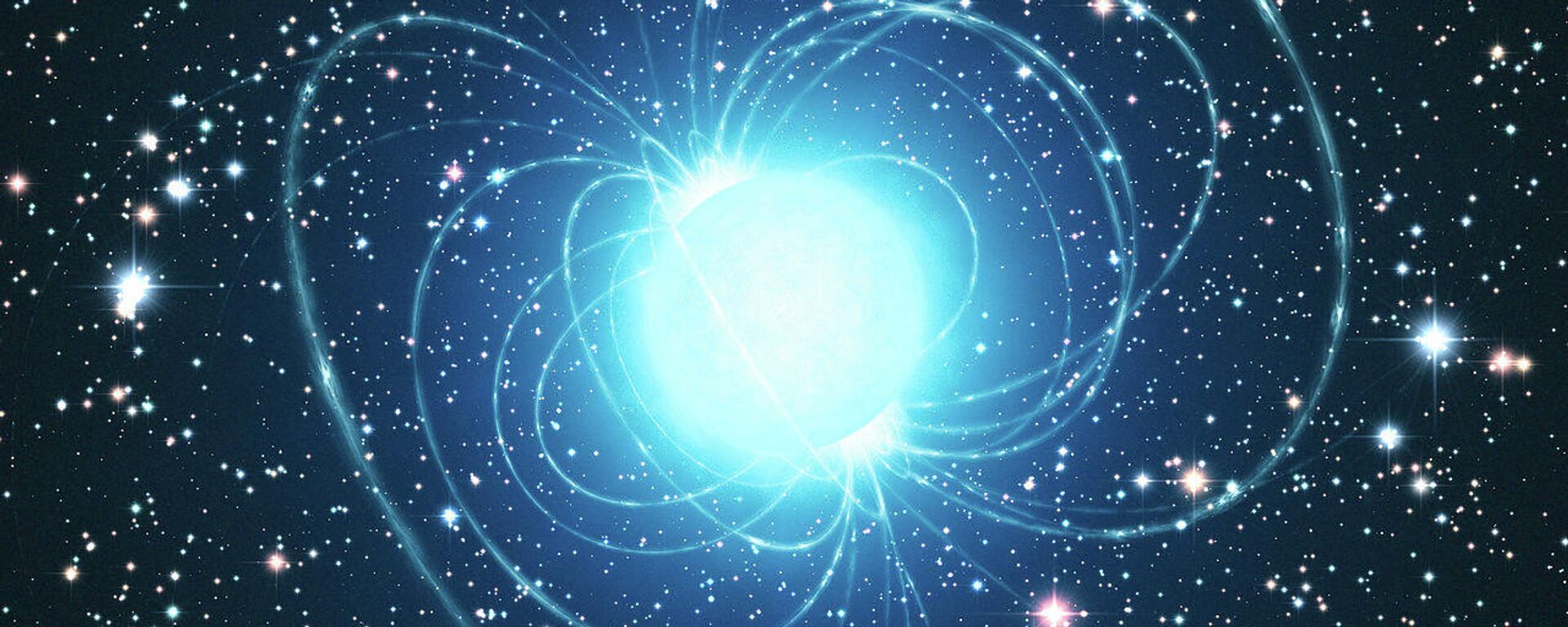https://sputnikglobe.com/20230818/neptunes-enigmatic-cloud-disappearance-traced-to-solar-cycle-defying-expectations-1112692865.html
Neptune's Enigmatic Cloud Disappearance Traced to Solar Cycle, Defying Expectations
Neptune's Enigmatic Cloud Disappearance Traced to Solar Cycle, Defying Expectations
Sputnik International
Astronomers have revealed an unexpected link between the cloud patterns on Neptune and the 11-year solar cycle, a phenomenon driven by the Sun's magnetic activity.
2023-08-18T00:49+0000
2023-08-18T00:49+0000
2023-08-18T03:46+0000
beyond politics
neptune
sun
space
space exploration
magnetic fields
keck observatory
science & tech
https://cdn1.img.sputnikglobe.com/img/07e7/08/11/1112692705_39:0:1963:1082_1920x0_80_0_0_1dfd29b5c0ae5a6345ae057b5ee09600.png
A recent discovery by astronomers has revealed an unexpected link between the cloud patterns on Neptune and the 11-year solar cycle, a phenomenon driven by the sun's magnetic activity.The revelation has been unearthed through an analysis of over three decades of observations of Neptune by NASA's Hubble Space Telescope, the W. M. Keck Observatory in Hawaii, and the Lick Observatory in California.Recent observations indicate a significant drop in cloud coverage since 2019, surprising researchers with the rapidity of this change.Led by a team from the University of California (UC) Berkeley, the study discovered a remarkable connection between the ice giant's cloud cover and the solar cycle, which involves the sun's magnetic field undergoing periodic changes over an 11-year cycle. The cycle results in variations in solar flare activity and sunspot numbers.Researchers found that around two years after the peak of the solar cycle, an increase in cloud cover was observed on Neptune. Furthermore, the abundance of clouds seemed to correlate with the planet's brightness, influenced by sunlight reflecting off its surface. The correlation provides strong evidence the sun's ultraviolet (UV) radiation might initiate a photochemical reaction in Neptune's atmosphere, leading to cloud formation.Analyzing over two and a half cycles of cloud activity spanning nearly 30 years, the team noted a synchronization between changes in Neptune's brightness and cloud cover, although with a lag of about two years. The delay is attributed to the time required for photochemical processes to lead to cloud formation in the upper reaches of Neptune's atmosphere.The study's implications extend beyond understanding Neptune's weather patterns. Insights gained from the research will contribute to a deeper comprehension of exoplanets, which often share Neptune-like traits.Despite the remarkable progress made, scientists stress the need for continued observations to monitor Neptune's cloud activity and further explore the intricate interplay between the solar cycle and the ice giant's enigmatic atmosphere.The findings were published in the Icarus journal.
https://sputnikglobe.com/20230817/astronomers-spot-large-helium-star-likely-to-become-mysterious-magnetar-1112691416.html
neptune
Sputnik International
feedback@sputniknews.com
+74956456601
MIA „Rossiya Segodnya“
2023
News
en_EN
Sputnik International
feedback@sputniknews.com
+74956456601
MIA „Rossiya Segodnya“
Sputnik International
feedback@sputniknews.com
+74956456601
MIA „Rossiya Segodnya“
neptune clouds, are there clouds on neptune, how does sun affect planets, how do solar cycles work, what are cloud patterns on neptune, neptune observations showed
neptune clouds, are there clouds on neptune, how does sun affect planets, how do solar cycles work, what are cloud patterns on neptune, neptune observations showed
Neptune's Enigmatic Cloud Disappearance Traced to Solar Cycle, Defying Expectations
00:49 GMT 18.08.2023 (Updated: 03:46 GMT 18.08.2023) Neptune, the outermost major planet in our solar system, has long puzzled scientists due to its complex cloud behavior. Despite its great distance from the sun, clouds have been found to correlate with solar activity rather than the planet's own lengthy seasons.
A recent discovery by astronomers has revealed an unexpected link between the cloud patterns on Neptune and the 11-year solar cycle, a phenomenon driven by the sun's magnetic activity.
The revelation has been unearthed through an analysis of over three decades of observations of Neptune by NASA's Hubble Space Telescope, the W. M. Keck Observatory in Hawaii, and the Lick Observatory in California.
"I was surprised by how quickly clouds disappeared on Neptune... We essentially saw cloud activity drop within a few months," said Imke de Pater, emeritus professor of astronomy at UC Berkeley and senior author of the study.
Recent observations indicate a significant drop in cloud coverage since 2019, surprising researchers with the rapidity of this change.
Led by a team from the University of California (UC) Berkeley, the study discovered a remarkable connection between the ice giant's cloud cover and the solar cycle, which involves the sun's magnetic field undergoing periodic changes over an 11-year cycle. The cycle results in variations in solar flare activity and sunspot numbers.
"These remarkable data give us the strongest evidence yet that Neptune's cloud cover correlates with the sun’s cycle. Our findings support the theory that the sun's UV rays, when strong enough, may be triggering a photochemical reaction that produces Neptune’s clouds," said de Pater.
Researchers found that around two years after the peak of the solar cycle, an increase in cloud cover was observed on Neptune. Furthermore, the abundance of clouds seemed to correlate with the planet's brightness, influenced by sunlight reflecting off its surface. The correlation provides strong evidence the sun's ultraviolet (UV) radiation might initiate a photochemical reaction in Neptune's atmosphere, leading to cloud formation.
Analyzing over two and a half cycles of cloud activity spanning nearly 30 years, the team noted a synchronization between changes in Neptune's brightness and cloud cover, although with a lag of about two years. The delay is attributed to the time required for photochemical processes to lead to cloud formation in the upper reaches of Neptune's atmosphere.

17 August 2023, 21:12 GMT
The study's implications extend beyond understanding Neptune's weather patterns. Insights gained from the research will contribute to a deeper comprehension of exoplanets, which often share Neptune-like traits.
Despite the remarkable progress made, scientists stress the need for continued observations to monitor Neptune's cloud activity and further explore the intricate interplay between the solar cycle and the ice giant's enigmatic atmosphere.
The findings were published in the
Icarus journal.



